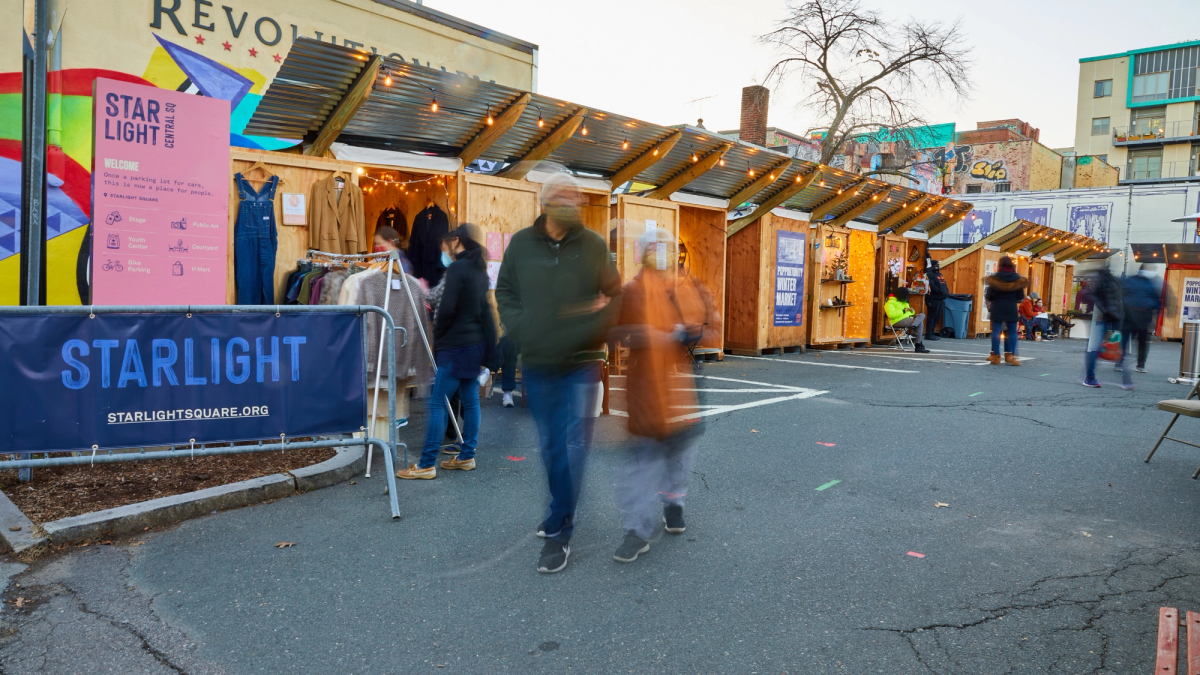
How Cities Can Adopt 'Try Before You Buy' Models & 5 Reasons Why Your City Should!
Pop-ups allow you to “test drive” placemaking concepts and get community feedback and buy-in before spending a lot on a permanent installation.
Editor's Note: This post was originally published on April 20, 2020. This post was updated on April 19, 2022.
We’ve all experienced the dilemma when purchasing items online, wondering if the item will fit or if it will look as good as it does in the picture, or frankly, if we’d be happy with our purchase and experience once it arrives. At first, it’s a risk, and a well-understood hesitation before buying the item. But now, companies have made it easy to ensure the confidence of the end customer that the product will be perfect for them.
A novel yet simple idea, companies like Warby Parker, an online prescription eyeglass retailer, are one of the many companies that pioneered the “try before you buy” concept. The company’s home try-on feature lets customers select any five pairs of glasses to have shipped to them free of charge. After five days, customers decide which pairs they like and order their favorites online.
Clothing companies such as Trunk Club and Stitch Fix have been quick to adopt the idea, and we continue to see this concept expand to other sectors, such as tech gadgets and companies like Lumoid allowing customers to test audio products.
It turns out that online retailers are not the only ones to recognize the value of the try before you buy model. We’re seeing this plays a role in all sorts of spaces, from hiring people to buying startups!
Starting in the e-commerce sector, the “try it before you buyit ” concept has been disrupting the decision process for the better. Now, the question is, can this model be adopted in the public space and placemaking sector?
A pop-up community project allows you to “test drive” placemaking concepts and get community feedback and buy-in before spending a lot on a permanent installation.
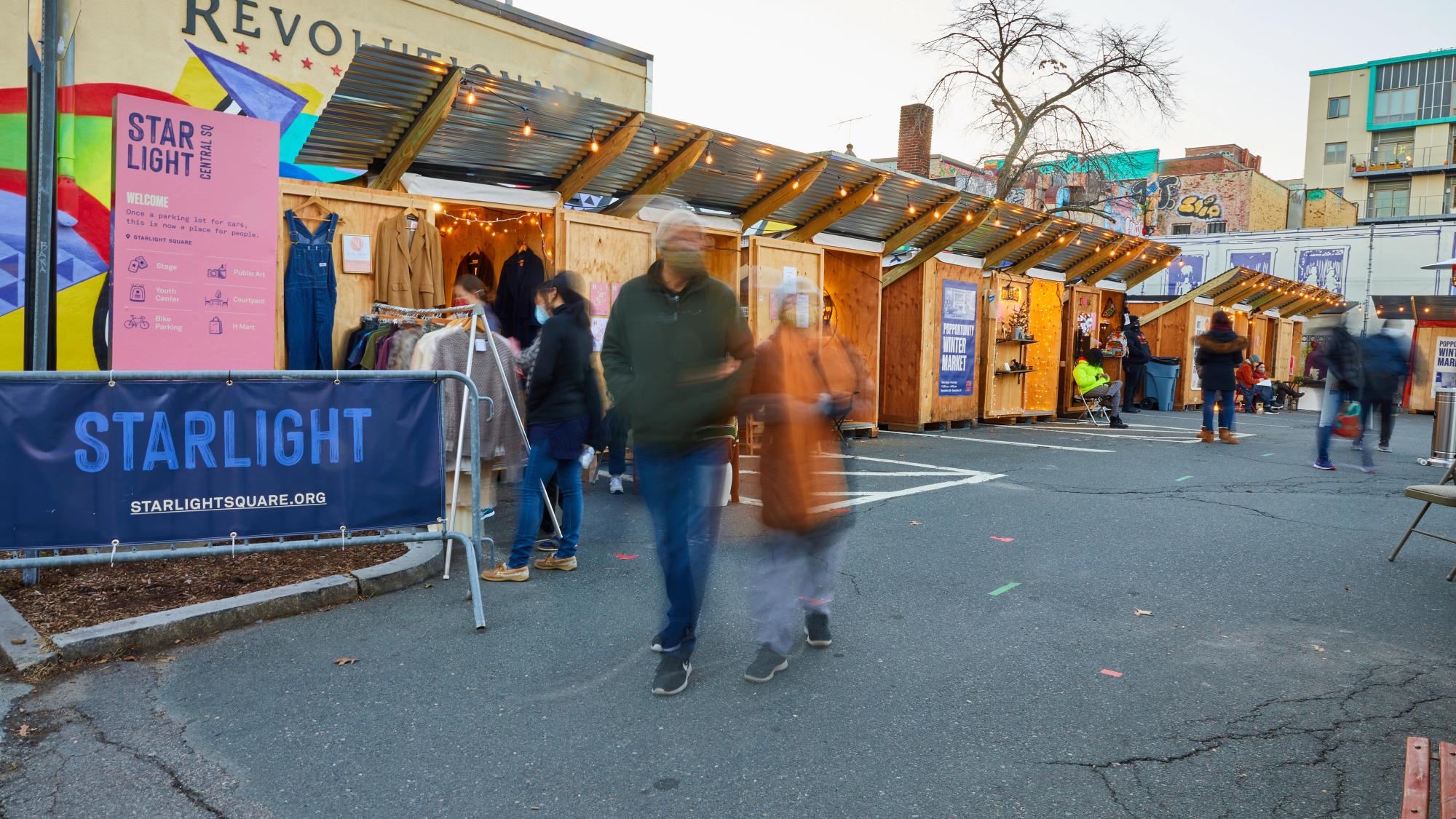
5 Reasons Your City Should Try Pop-Ups to "Try Before You Buy"

1. Pop-ups can answer questions and assumptions about the impact of the installation
For communities, public space improvement projects come with a lot of questions. How will the space be used by the community? Will it disrupt other ongoing uses of the space? How sustainable will its upkeep be? Surveys, studies, and research will answer some questions but nothing is better than just testing it out.
2. Pop-ups are low cost
A pop-up costs a fraction of the actual price of a full-scale installation. Pop-ups are becoming an increasingly popular way for municipalities and local activists to test how public space improvements will work. A temporary and low-cost transformation of a space can serve as a test case for communities to evaluate the impact, local demand, and practicality of the change.
The COVID-19 pandemic forced many communities to open streets and turn parking spaces into spaces for restaurants to continue serving patrons while indoor dining was limited. What started as temporary installations has interested many people and restaurants in making these changes permanent.
Small parklets that transform vacant or underutilized spaces on the roadside into community hubs are a perfect example of a low-cost mechanism to see how necessary public space may be in a part of town. In this case, these low-cost parklet installations can become a permanent neighborhood fixture.
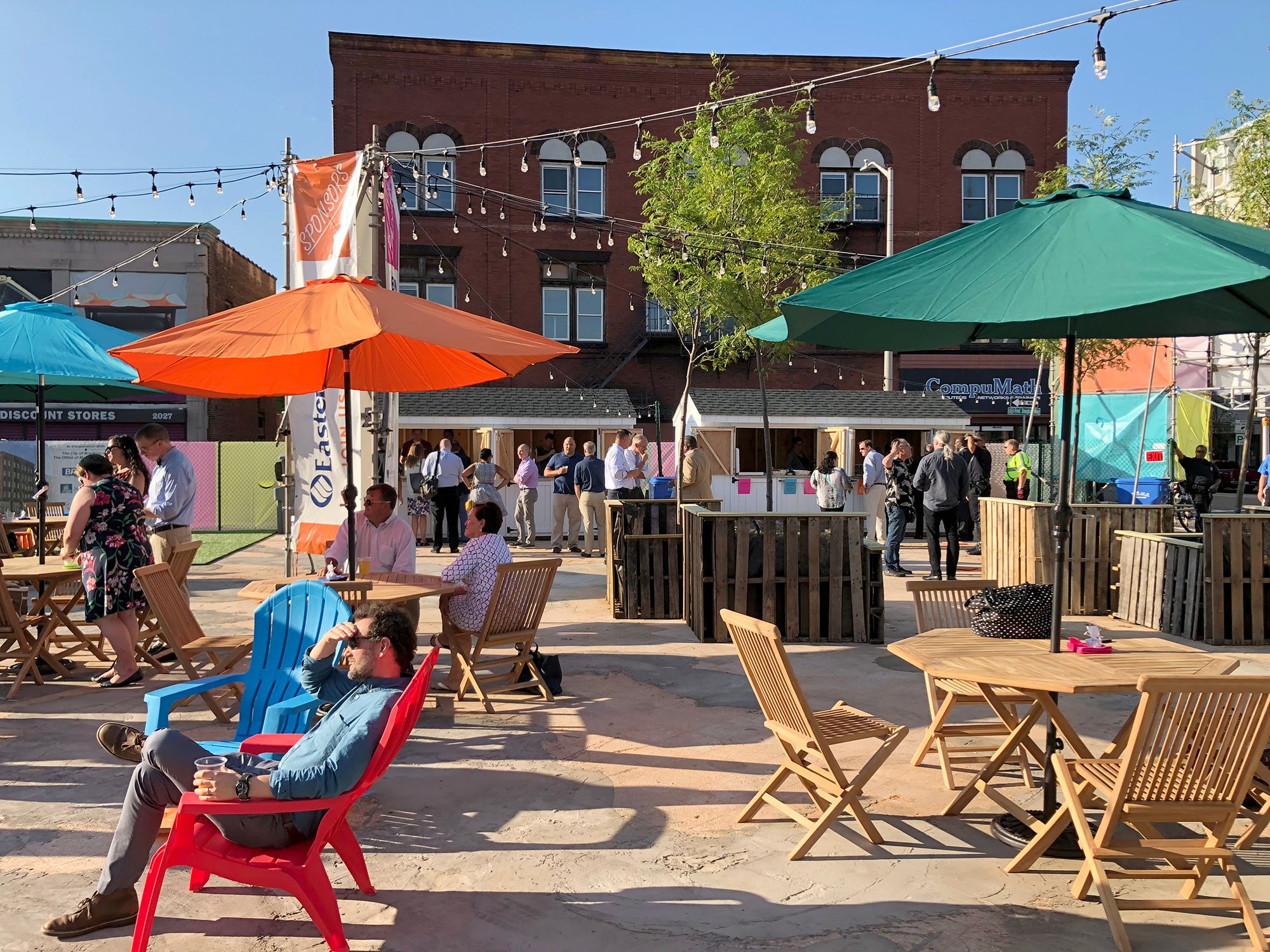
3. Pop-ups can jumpstart the decision-making process for projects
A tactical urbanist approach, such as painted bike lanes without government approval to push for safer streets, has even allowed cities to recognize the value and impact on traffic flow and transportation. This pop-up bike lane approach is a way to test the value and simplicity of a bike lane faster than waiting for city council and Department of Transportation discussions and approvals, which are slow to even get started on evaluating the idea. This concept showcases the seriousness and demand from the local cyclist community and has spurred the cities to take into consideration the demands of their residents with a working example of how bike lanes could work.
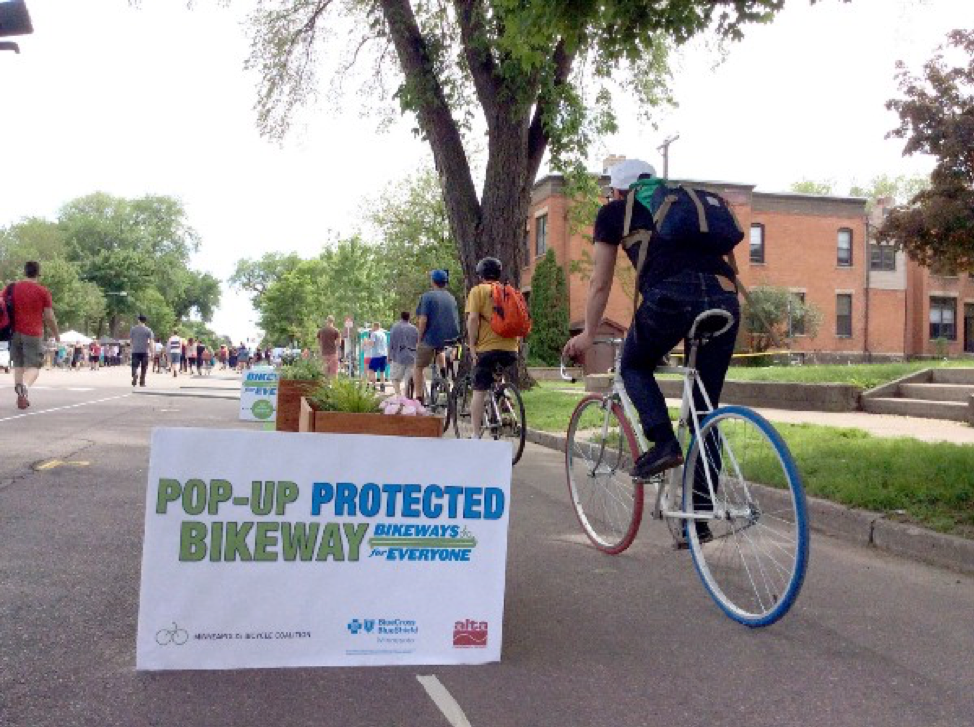
4. Pop-up retail is a whole different type of pop-up — A permanent installation to inspire businesses to test the market
With Patronicity, we’ve seen community members help fund The Corner Spot, a pop-up retail space in the Town of Ashland, Massachusetts. What is now a permanent public space, the Corner Spot brought new life to downtown and created a new destination for community members. The town was looking for new businesses, and an idea for how to transform a vacant lot and was overwhelmed by the positive response local residents shared on the space. Even before its creation, the crowdfunding campaign drove interest, public support, and funding, followed by a new space buzzing with people.
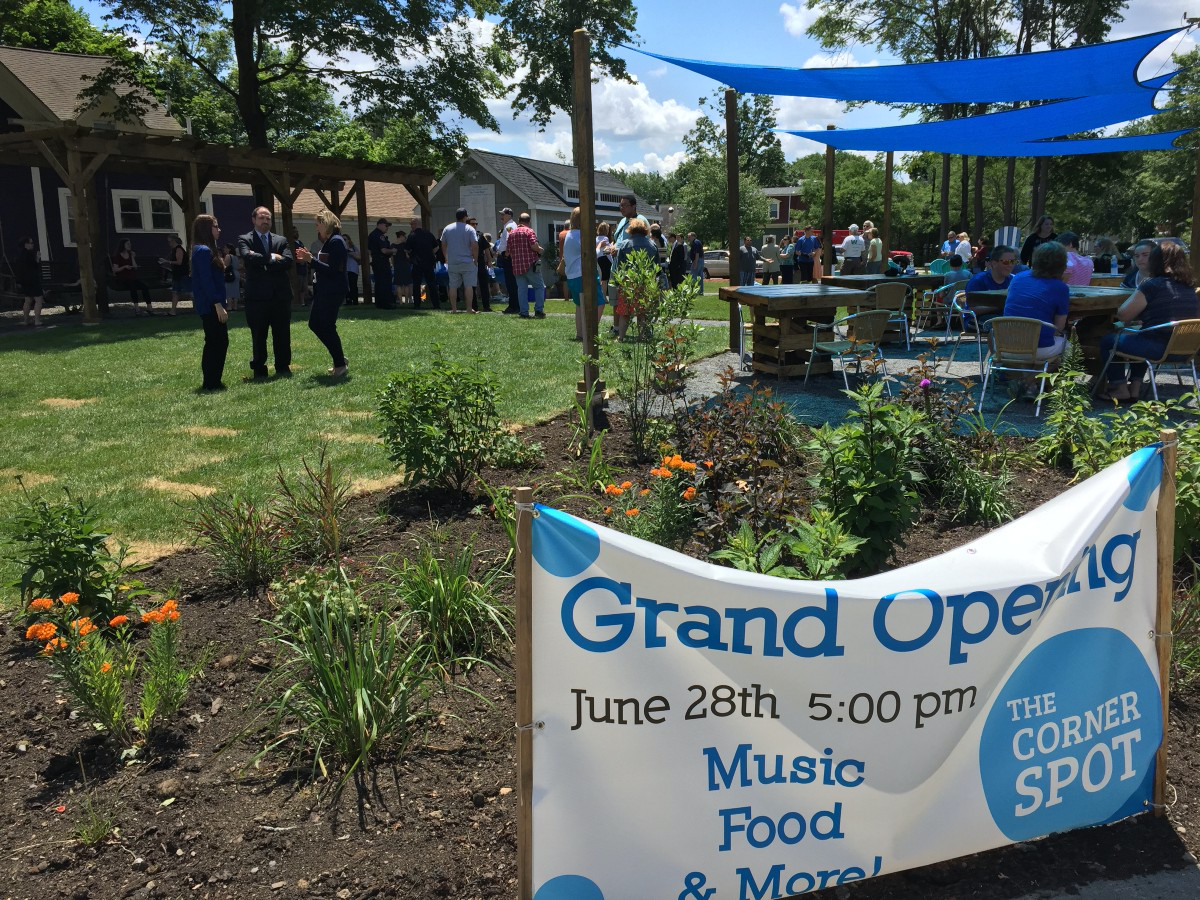
5. Pop-ups don’t just have to be temporary installments
Pop-ups aren’t just for testing ideas, sometimes they are useful for temporarily-permanent ideas to have a lasting impact. For example, in Tecumseh, MI, the city wanted to host a summer-long Movies-in-the-Park series and crowdfunded on Patronicity to purchase the equipment. Once they had the equipment, they were able to host movie pop-ups weekly in a neighborhood park all summer long for years to come.
Pop-ups are an easy way for communities in cities and towns to test new ideas, and where temporary installations can become permanent destinations that build vibrant communities.
Local residents and the city government can try out new public spaces before investing more funding to buy or enhance them for the community long-term. We’ve also seen what started as a temporary installation, just become a permanent fixture at no extra cost! With the end of the COVID-19 social distancing restrictions, pop-ups can be a great way to expand city streets with more pedestrian and cyclist-friendly landscapes.
Interested in trying out a Pop-up in your city this summer?
At Patronicity, our team of placemakers can help you plan, fund, and implement pop-up installations that can result in long-term sustainable projects.
I’d love to hear your ideas! Email me at ebrahim@patronicity.com.

